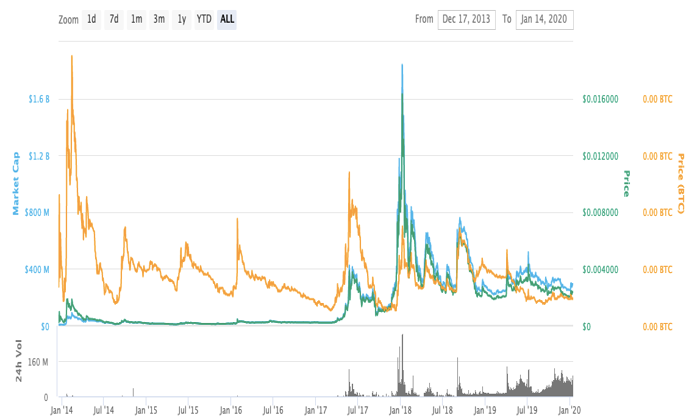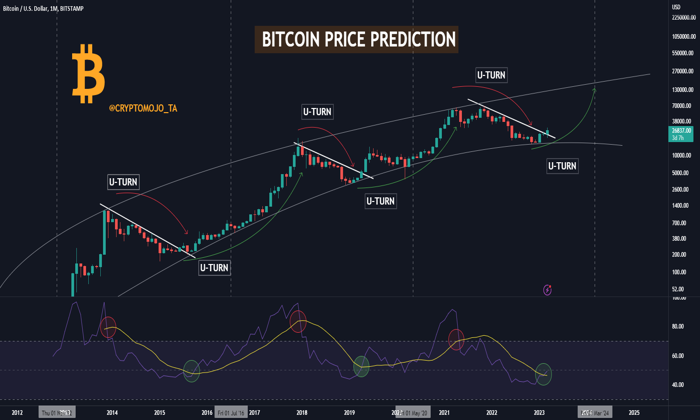The recent decline in Ethereum’s price has become a hot topic among cryptocurrency enthusiasts and investors alike. Not only has ETH plummeted approximately 77% against Bitcoin, but this significant underperformance starkly highlights worrying trends in the cryptocurrency market. While Ethereum’s upgrades promised a brighter future, they have not translated into price stability or growth, leaving many to question their crypto investment strategies. Reports from analytics platforms like Santiment have shed light on the multifaceted issues plaguing Ethereum, drawing comparisons to its rival, Bitcoin. As the landscape evolves, understanding why Ethereum struggles in the wake of BTC’s resurgence has become crucial for anyone navigating today’s crypto market dynamics.
The recent downturn of Ethereum, the leading smart contract platform in the blockchain ecosystem, has sparked widespread discussion in the financial community. With its ongoing shortcomings in the face of Bitcoin’s resurgence, Ethereum’s performance is increasingly characterized by significant underwhelming market trends. Many investors are reevaluating their crypto investment tactics in light of Ethereum’s struggle to maintain market relevance, particularly as other blockchains emerge with superior offerings. Furthermore, ongoing upgrades and scalability solutions for Ethereum seem unable to halt its declining market position. As traders and analysts dissect the reasons behind Ethereum’s lagging status, the conversation has intensified around what the future holds for this once-promising cryptocurrency.
Ethereum Price Decline: An Alarming Trend
The cryptocurrency market is witnessing a distinct trend as Ethereum’s price continues to face significant decline, particularly against Bitcoin. Recent data reveals a staggering 77% drop in ETH’s value compared to BTC since December 2021, making it a focal point for analysts and traders alike. The sustained underperformance raises questions about Ethereum’s ability to recover from these lows, particularly when juxtaposed with Bitcoin’s relative strength and resurgence in market dominance. With this stark contrast, many investors are left pondering the future of Ethereum as the second-largest cryptocurrency.
In analyzing the factors behind the Ethereum price decline, various elements come into play. Technical barriers such as complex roadmap implementations and emerging layer 2 scaling solutions dilute user engagement on the main Ethereum network. These aspects, along with macroeconomic influences and shifting investor sentiment, have exacerbated the price disparity between Ethereum and Bitcoin, leaving Ethereum holders in a precarious position. As alternative cryptocurrencies gain traction and investment appeal, the challenge of reclaiming its position in the cryptocurrency hierarchy grows ever more daunting for Ethereum.
Understanding Ethereum’s Lag Behind Bitcoin
Ethereum’s persistent lag in price performance compared to Bitcoin has caused growing concern among investors and enthusiasts. Despite the platform being pivotal in various DeFi projects, NFTs, and smart contracts, it has failed to translate technological supremacy into price stability or growth. Reports attribute this underperformance to factors like rising gas fees, delayed upgrades, and a vague investment narrative. As Bitcoin consolidates its position as ‘digital gold,’ Ethereum struggles with its identity, resulting in a loss of market share to emerging projects that offer simpler and more efficient alternatives.
Moreover, the sheer volatility within the cryptocurrency market means that Ethereum’s price dynamics are often impacted by external market trends. The recent surge in Bitcoin’s popularity has further widened the gap between the two cryptocurrencies. Analysts have noted that while Bitcoin benefits from a more well-defined market narrative, Ethereum’s multifaceted use cases create confusion among potential investors. As Ethereum attempts to pivot and redefine its value proposition, the ongoing price decline against BTC is likely to challenge its market position and investor confidence.
Ethereum Upgrades: Hurdles and Hopes
Ethereum has implemented various upgrades aimed at improving its scalability and efficiency, yet the anticipated benefits have not significantly reflected on its price. Upgrades like The Merge and Shanghai aimed to enhance the ecosystem’s capabilities, but the public’s understanding of these innovations remains fragmented. Consequently, investors often find themselves disengaged and unsure, leading to a sell-off that exacerbates the price decline, particularly against Bitcoin. As such, it has become essential to communicate the benefits of these upgrades more effectively to restore investor confidence.
Moreover, while Ethereum’s upgrades represent a critical step toward addressing its challenges, the slow rollout and perceived inefficiencies in execution have stirred frustration among users. Competing blockchains are rapidly gaining traction, attracting crypto enthusiasts with promises of lower fees and faster transactions. Without clearly communicating the value and utility of its upgrades, Ethereum risks falling further behind. To affirm its position in the crypto landscape, it must not only deliver on its upgrades efficiently but also rebuild investor trust through transparent communication and robust performance metrics.
The Role of Investor Sentiment in Ethereum’s Performance
Investor sentiment plays a crucial role in shaping Ethereum’s market performance, particularly given its ongoing price decline against Bitcoin. Market reactions often hinge on perceived narratives surrounding cryptocurrencies, and in the case of Ethereum, mixed messages have led to a lack of confidence. With Bitcoin being solidified as a store of value, Ethereum’s general sentiment swings between optimism and skepticism, partly due to the complex nature of its functioning and the circumstances surrounding its upgrades. The ongoing regulatory uncertainty has further clouded judgments, leaving many hesitant to commit to ETH.
Additionally, the rapid rise of competing cryptocurrencies has led to shifts in sentiment towards Ethereum, with investors flocking to alternatives that promise enhanced performance and lower transaction costs. As sentiment swings, Ethereum needs to foster a reassuring narrative that highlights its advantages and technological advancements. Failing to create a compelling story could result in further alienation from the broader investor community, stalling any potential for recovery and allowing Bitcoin and other cryptocurrencies to leave Ethereum behind in the race for market dominance.
Ethereum’s Investment Strategy: Reassessing the Value Proposition
In the wake of Ethereum’s declining price relative to Bitcoin, many investors are reassessing their strategies concerning ETH holdings. The lack of a compelling investment narrative places significant pressure on Ethereum to redefine its value proposition in the rapidly-evolving cryptocurrency ecosystem. As other networks attract users with faster transaction speeds and lower fees, Ethereum’s once-hallowed status now seems to be under threat. This shift necessitates an urgent reevaluation of investment strategies that take into account Ethereum’s current challenges and the overall state of the cryptocurrency market.
Additionally, amid rising competition, investors must also contemplate how Ethereum’s evolving ecosystem aligns with their long-term goals. With Ethereum being characterized by variable gas fees and complex upgrade processes, understanding how these factors influence investment decisions is critical. As the cryptocurrency market trends continue to solidify, adopting a critical approach and developing a diversified investment strategy that balances potential risks and opportunities might be essential for ETH investors looking to navigate this turbulent landscape.
Navigating Regulatory Concerns in Ethereum Investment
Regulatory scrutiny continues to loom large over the cryptocurrency market, and Ethereum is not immune to its impact. Unlike Bitcoin, which has garnered a relatively established framework, Ethereum faces distinct challenges that contribute to a broader narrative of uncertainty among investors. Frequent discussions regarding the classification of ETH as a security pose significant risks for those looking to invest in or utilize the platform. This ambiguity can discourage new investors from entering the market, leading to an increase in selling pressure that contributes to Ethereum’s ongoing price struggles.
To ensure sustainable growth and enhance investor confidence, it is crucial for Ethereum to navigate these regulatory waters effectively. Building relationships with regulatory bodies and ensuring compliance in developments can serve as a proactive measure against potential pitfalls. By establishing itself as a transparent and compliant entity, Ethereum may not only strengthen its market position but also improve the overall perception of its investment potential, paving the way for a future rebound amid turbulent market conditions.
Competing Cryptocurrencies and Their Effect on Ethereum
The rise of competing cryptocurrencies has been a significant contributor to Ethereum’s ongoing price decline, especially in its relative performance against Bitcoin. As projects like Solana and Cardano continue to attract users with promises of speed and lower fees, Ethereum’s market dominance is slowly eroding. These alternatives, seen by some investors as more user-friendly options, raise concerns regarding Ethereum’s ability to maintain its status as the cornerstone of decentralized applications and smart contracts. This trend is indicative of a larger movement within the crypto landscape towards more efficient and accessible alternatives.
In light of this competition, Ethereum must adapt and innovate to retain its user base and regain investor confidence. Whether through improved network capabilities or more attractive incentives, the onus is on Ethereum to deliver enhanced value to its community. As Ethereum continues to grapple with price struggles, enhancing user experiences and addressing the shortcomings previously mentioned will be pivotal in reasserting itself in the cryptocurrency hierarchy and attracting back those who have drifted towards competing platforms.
The Future Outlook for Ethereum Amidst Challenges
The future of Ethereum remains uncertain as it confronts multiple challenges across various fronts. From regulatory hurdles to competitive pressures, the combination of these elements continues to permeate investor sentiment and influence market performance. The increasing selling pressure from staked ETH withdrawals further complicates Ethereum’s outlook, creating additional hurdles as it attempts to regain momentum. Nevertheless, the possibility of recovering from its price decline hinges on how effectively Ethereum can address these concerns and re-establish trust among its investors.
In conclusion, Ethereum’s roadmap for future recovery will depend heavily on its ability to enhance communication about its upgrades, mitigate high fees, and confront regulatory uncertainties. As the market evolves and competitor cryptocurrencies improve their offerings, Ethereum’s adaptability will define its trajectory. Ongoing innovation, strategic outreach, and a balanced investment narrative are essential for Ethereum to navigate through these challenges successfully and reclaim its position in the cryptocurrency landscape.
Frequently Asked Questions
What factors are contributing to Ethereum’s price decline compared to Bitcoin?
Ethereum’s price decline against Bitcoin can be attributed to several factors. Key issues include high gas fees, slow upgrades, and competition from Layer 2 solutions that divert activity from the mainnet. Additionally, regulatory uncertainties surrounding Ethereum’s classification and an unclear investment narrative compared to Bitcoin are crucial to its underperformance in the cryptocurrency market.
How does the Ethereum price decline reflect its underperformance against Bitcoin?
The Ethereum price decline highlights its substantial underperformance against Bitcoin, evidenced by a staggering 77% drop in price relative to BTC since December 2021. Factors such as market volatility, increased competition from other altcoins, and technical challenges have significantly impacted ETH’s value, leading to a growing perception of the asset as less desirable among investors.
What is the impact of Ethereum upgrades on its price performance in the crypto market?
Despite several major upgrades, such as The Merge and Shanghai, Ethereum’s price performance has remained lackluster. These upgrades have not sufficiently addressed issues like high gas fees or improved user experience, leading to ongoing challenges in regaining market value and increasing investor confidence in the cryptocurrency.
How do cryptocurrency market trends affect Ethereum’s price compared to Bitcoin?
Current cryptocurrency market trends reveal a persistent preference for Bitcoin over Ethereum, as BTC has regained much of its market dominance while ETH struggles. This trend has created a narrative where Ethereum is seen as underperforming, exacerbated by its inability to attract investments compared to more innovative and efficient altcoins.
Why are investors concerned about Ethereum’s future in light of its price decline and competition?
Investors are expressing concerns about Ethereum’s future due to its ongoing price decline, competition from faster and cheaper alternatives, and unresolved regulatory issues. These factors lead to uncertainty about Ethereum’s role in the crypto ecosystem, making it a less attractive investment compared to Bitcoin and emerging cryptocurrencies.
What does the Ethereum vs Bitcoin price ratio indicate for investors?
The Ethereum vs Bitcoin price ratio indicates a troubling outlook for investors in ETH, as it highlights Ethereum’s significant decline in value against Bitcoin over the past years. A consistent downtrend in this ratio suggests that Ethereum is losing its competitive edge, raising doubts about its viability as a long-term investment compared to BTC.
How do Ethereum’s Layer 2 solutions relate to its price decline?
Ethereum’s Layer 2 solutions, such as Arbitrum and Optimism, while intended to enhance scalability, have inadvertently contributed to its price decline. By diverting user activity and investments away from the Ethereum mainnet, these solutions dilute demand for ETH, complicating its market position and overall appeal.
What role does regulatory concern play in Ethereum’s price decline?
Regulatory concerns play a significant role in Ethereum’s price decline. Unlike Bitcoin, which enjoys a clearer legal status, Ethereum faces uncertainty regarding its classification as a security. This ambiguity creates apprehension among investors and affects their willingness to invest in ETH, contributing to the ongoing decline in its price.
| Key Point | Details |
|---|---|
| Price Decline | Ethereum prices have declined 77% relative to Bitcoin since December 2021. |
| Performance Comparison | Ethereum lags behind Bitcoin in market performance and dominance metrics. |
| Market Sentiment | Traders are concerned, referring to ETH as a ‘shitcoin’ due to its underperformance. |
| Technical Challenges | Complexities with upgrades like The Merge and Shanghai hinder investor confidence. |
| Competition | Newer blockchains are attracting users away from Ethereum. |
| Regulatory Concerns | Ethereum faces potential classification issues as a security, increasing uncertainty. |
| Gas Fees | High gas fees frustrate users, pushing them towards cheaper alternatives. |
Summary
The Ethereum price decline is a significant concern for investors as it has dropped 77% against Bitcoin since late 2021. This persistent decline can be attributed to various factors, including technical challenges, regulatory uncertainties, increased competition from other cryptocurrencies, and high transaction costs that deter users. As Ethereum struggles to reclaim its previous highs, it faces mounting pressure from both market sentiment and competing blockchain technologies.
The recent Ethereum price decline has sparked conversations across the cryptocurrency community, raising questions about its viability against Bitcoin. After numerous upgrades aimed at enhancing functionality, Ethereum’s value has unfortunately dropped by an alarming 77% compared to BTC since December 2021. This stark underperformance highlights significant challenges facing the Ethereum network, from technical hurdles to growing competition within the crypto space. Moreover, while Bitcoin continues to reclaim its dominance and attract robust investment, Ethereum seems to struggle with investor sentiment amid fears of an unclear regulatory future. As cryptocurrency market trends shift, this decline in value underscores the need for a reevaluation of crypto investment strategies by investors who have traditionally favored ETH over its rivals.
In recent discussions about altcoins, Ethereum’s dwindling price trajectory has become a focal point, especially when juxtaposed with Bitcoin’s soaring success. Once a frontrunner in the digital currency arena, the Ethereum network has encountered substantial difficulties that have stymied its growth potential, leading to a notable disparity in its market performance. Analysts have pointed out that the ongoing struggles in terms of user adoption and operational upgrades are contributing to Ethereum’s sluggish momentum. Meanwhile, the cryptocurrency landscape sees newer coins gaining attraction, which further complicates Ethereum’s standing as a leading blockchain solution. As traders and analysts evaluate the cryptocurrency landscape, it is crucial to navigate these dynamics carefully to formulate effective investment strategies.













